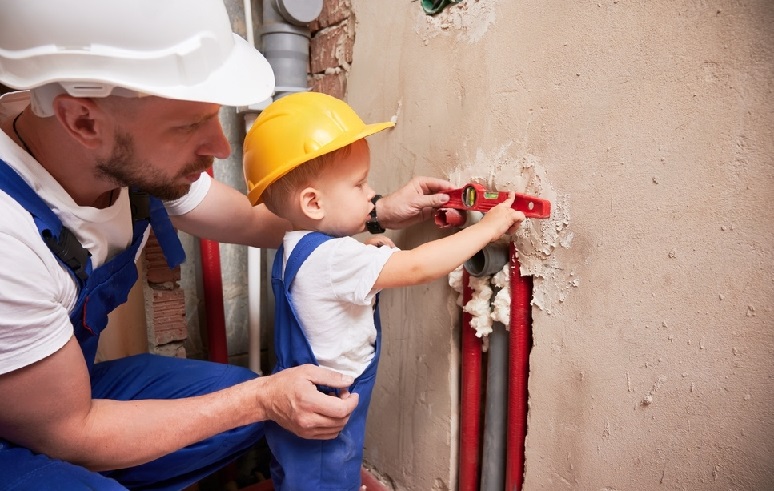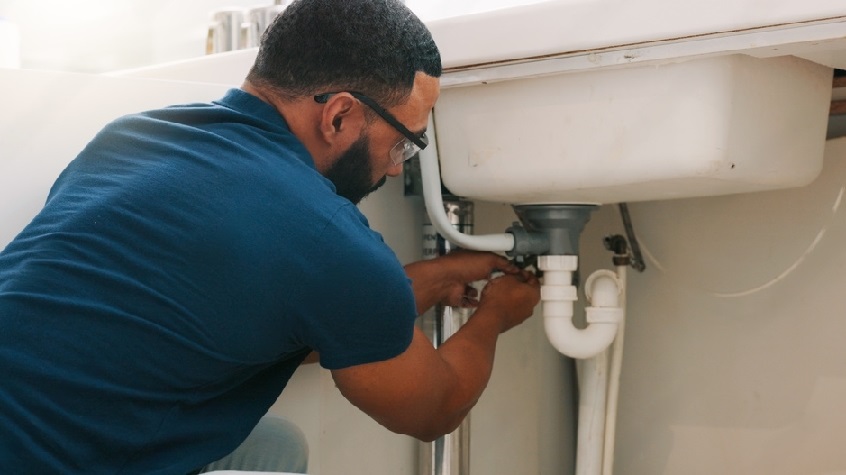Table of Contents
Introduction
In the realm of bathroom fixtures, bidets have gained popularity for their hygienic benefits and comfort. However, to fully enjoy these benefits, it’s essential to understand the bidet’s plumbing. In this comprehensive guide, we’ll delve into the various components of bidet plumbing, the installation process, maintenance tips, troubleshooting common issues, and safety considerations.

Components of a Bidet Plumbing System
Water Supply
The Importance of Water Supply
The water supply is the lifeblood of your bidet, providing the cleansing stream necessary for optimal hygiene. Without a steady and reliable water supply, your bidet cannot function effectively. Therefore, understanding how the water supply works and ensuring its proper installation is essential for the overall functionality of your bidet system.
Connection to Main Water Line
Your bidet’s water supply is typically connected to the main water line of your house. This connection ensures a constant flow of water to your bidet whenever it is needed. During the installation process, it’s crucial to establish a secure and leak-free connection between the bidet and the main water line to prevent any water wastage or damage to your property.
Water Pressure Considerations
Water pressure plays a significant role in the performance of your bidet. Adequate water pressure is necessary to ensure effective cleansing and comfort during use. Most bidet models come with adjustable water pressure settings, allowing you to customize the intensity of the water stream according to your preferences. However, it’s essential to ensure that your home’s water pressure is sufficient to support your bidet’s operation. If you experience low water pressure, you may need to install a pressure booster pump to enhance water flow to your bidet.

Nozzle System
Types of Nozzles
Bidets typically feature two main types of nozzles: fixed and retractable.
Fixed Nozzles: These nozzles remain stationary and are positioned strategically to deliver the cleansing water stream effectively. They are designed to provide consistent coverage and precise targeting during use.
Retractable Nozzles: Unlike fixed nozzles, retractable nozzles can extend and retract as needed for cleaning. This versatility allows for customizable positioning and ensures thorough cleansing in hard-to-reach areas.
Material and Construction
The material and construction of bidet nozzles are crucial factors that determine their durability and hygiene.
Materials: Bidet nozzles are commonly made from durable materials such as stainless steel or plastic. Stainless steel nozzles offer superior durability and resistance to corrosion, making them an ideal choice for long-term use. Plastic nozzles, on the other hand, are lightweight and cost-effective but may be more prone to wear and tear over time.
Construction: The design and construction of bidet nozzles play a significant role in their performance. Nozzles with precision-engineered openings ensure a consistent and even water flow, resulting in thorough cleansing with minimal water consumption. Additionally, features such as self-cleaning mechanisms help prevent the buildup of debris and bacteria, maintaining optimal hygiene during use.
Temperature Control
In the world of bathroom innovations, bidets have become a popular choice for their hygienic benefits and comfort. Among the features that enhance their appeal is temperature control. Let’s delve into this aspect to understand how it works and why it’s essential for a satisfying bidet experience.
The Significance of Temperature Control
Temperature control in a bidet adds an extra layer of comfort and customization to your cleansing routine. Just like adjusting the temperature of your shower, being able to control the temperature of the water used for cleansing ensures a more pleasant experience, especially during colder seasons or in chilly environments. It allows you to tailor the water temperature to your personal preference, enhancing your overall comfort and satisfaction.
Hot and Cold Water Supply
Bidets with temperature control typically require connections to both hot and cold water supplies. These connections enable the bidet to mix the water to achieve the desired temperature. The hot water supply is usually connected to your home’s existing hot water line, while the cold water supply is connected to the main water line.
Mixing Valves
The magic of temperature control lies in the mixing valves installed within the bidet. These valves regulate the flow of hot and cold water to achieve the desired temperature. By adjusting the position of the mixing valves, you can increase or decrease the proportion of hot and cold water, allowing you to find the perfect balance for your comfort.

Installation Process
Pre-installation Considerations
Before diving into the installation process, it’s essential to consider a few factors. Choose a suitable location for your bidet that allows easy access to water lines and electrical outlets if applicable. Gather all the necessary tools and equipment, ensuring you have everything on hand before starting the installation.
Step-by-Step Installation Guide
- Shutting off Water Supply: Begin by shutting off the water supply to the area where you’ll be installing the bidet. This prevents any unexpected leaks or water flow during installation.
- Connecting to Existing Plumbing: Follow the manufacturer’s instructions to connect the bidet to the existing plumbing. This typically involves attaching hoses or pipes to the water supply lines and securing them tightly to prevent leaks.
- Mounting the Bidet Unit: Once the plumbing connections are secure, mount the bidet unit according to the provided instructions. This may involve attaching it to the toilet seat or directly to the toilet bowl, depending on the design of your bidet.
- Testing for Leaks: After installation is complete, turn the water supply back on and carefully check for any leaks. If you notice any drips or leaks, tighten the connections until they are secure.

Maintenance and Troubleshooting
Regular Maintenance Tasks
Proper maintenance is key to keeping your bidet in top condition and ensuring optimal performance.
- Cleaning the Nozzles: Periodically clean the nozzles to remove any buildup or debris that may affect water flow or hygiene. Follow the manufacturer’s recommendations for cleaning products and techniques to avoid damaging the nozzles.
- Checking for Leaks: Regularly inspect the plumbing connections for any signs of leaks or drips. Tighten any loose connections and replace any damaged components to prevent water damage or potential flooding.
Troubleshooting Common Issues
Even with regular maintenance, you may encounter some common issues with your bidet.
- Low Water Pressure: If you notice low water pressure from your bidet, check the water supply valves to ensure they are fully open. You may also need to clean the nozzles to remove any buildup that could be restricting water flow.
- Clogs in the Nozzle: If the nozzle becomes clogged, try flushing it with clean water to remove any debris. If the clog persists, you may need to disassemble the nozzle and clean it thoroughly or contact a professional for assistance.
- Temperature Control Problems: If you’re experiencing issues with water temperature, check the hot and cold water supply lines to ensure they are connected correctly and fully open. Adjust the mixing valves as needed to achieve the desired temperature.

Safety Considerations
Electrical Safety
In the modern world of bathroom amenities, bidets have become increasingly sophisticated, with some models featuring electrical components for added functionality and comfort. While these electrical features can enhance the bidet experience, it’s crucial to prioritize electrical safety to prevent accidents and ensure a secure environment in your bathroom. Let’s explore the importance of electrical safety in bidets and the measures you can take to ensure safe operation.
Understanding Bidet Electrical Components
Bidets with electrical features often include heating elements, water heaters, control panels, and motors for functions like nozzle adjustment or seat warming. These components require electricity to operate efficiently, adding an extra convenience layer to your bidet experience.
Risks Associated with Electrical Components
While electrical features can enhance the functionality of bidets, they also introduce potential risks if not handled properly. Electrical malfunctions or faults can lead to hazards such as electrical shocks, short circuits, or even fires, posing a danger to users and property.
Prioritizing Electrical Safety
To ensure safe operation of your bidet’s electrical components, consider the following safety measures:
- Proper Installation: When installing a bidet with electrical features, follow the manufacturer’s instructions carefully to ensure correct installation. Ensure all electrical connections are secure and compliant with local building codes and regulations.
- Grounding: Proper grounding of electrical components is essential to prevent electrical shocks and ensure safe operation. Ensure that your bidet is connected to a grounded electrical outlet to provide a path for excess electrical current to dissipate safely.
- Waterproofing: Since bidets come into contact with water, it’s crucial to use waterproof electrical components and connections to prevent water damage and reduce the risk of electrical hazards. Look for bidets with waterproof control panels and sealed electrical enclosures for added safety.
- Regular Maintenance: Perform regular maintenance checks on your bidet’s electrical components to ensure they are in good working condition. Inspect electrical connections for signs of wear or damage and promptly replace faulty components to prevent potential hazards.
- Professional Installation and Repairs: If you’re unsure about installing or repairing electrical components in your bidet, it’s best to seek the assistance of a qualified electrician or professional technician. They have the knowledge and expertise to handle electrical work safely and effectively, reducing the risk of accidents or damage.

Water Safety
Ensuring Water Safety with Your Bidet
Bidets offer a host of benefits, from enhanced hygiene to added comfort, but it’s crucial to ensure water safety, given their water-based functionality. Let’s explore some essential aspects of water safety with your bidet to keep your bathroom experience clean and worry-free.
Understanding Water Safety
Water safety with bidets involves measures to prevent contamination, leaks, and other hazards associated with water use in the bathroom. Ensuring proper installation, maintenance, and usage practices can safeguard against potential risks and ensure a hygienic experience.
Backflow Prevention
Backflow prevention is critical to prevent contaminated water from flowing back into the main water supply. Bidet systems should incorporate backflow prevention devices or mechanisms to safeguard against this risk. These devices maintain the integrity of the water supply and prevent the possibility of cross-contamination.
Regular Sanitation Procedures
Regular sanitation procedures are essential to maintain water safety and hygiene with your bidet. Cleaning the bidet nozzle and other components regularly helps prevent bacterial growth and ensures a clean and sanitary experience. Follow the manufacturer’s recommendations for cleaning products and procedures to maintain optimal hygiene standards.
Installation Considerations
Proper installation is fundamental to water safety with your bidet. Ensure that the bidet is installed correctly, with secure connections to the water supply lines and appropriate backflow prevention measures in place. If you’re uncertain about the installation process, consider seeking professional assistance to ensure proper installation and water safety.
Maintenance Practices
Regular maintenance is key to ensuring water safety and optimal performance with your bidet. In addition to cleaning the bidet components, inspect the water supply lines and connections periodically for any signs of leaks or damage. Address any issues promptly to prevent water wastage and maintain water safety standards.

Conclusion
In conclusion, understanding your bidet’s plumbing is essential for maximizing its benefits and ensuring long-term functionality. By familiarizing yourself with the components of your bidet system, following proper installation and maintenance procedures, and addressing any issues promptly, you can enjoy a clean, comfortable, and hygienic bathroom experience for years to come. If you encounter any difficulties during installation or experience persistent issues with your bidet, don’t hesitate to seek professional assistance to ensure optimal performance and safety.

hiI like your writing so much share we be in contact more approximately your article on AOL I need a specialist in this area to resolve my problem Maybe that is you Looking ahead to see you